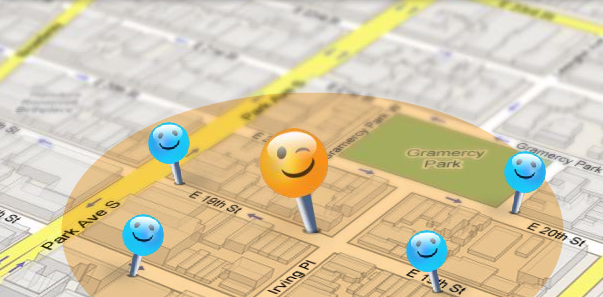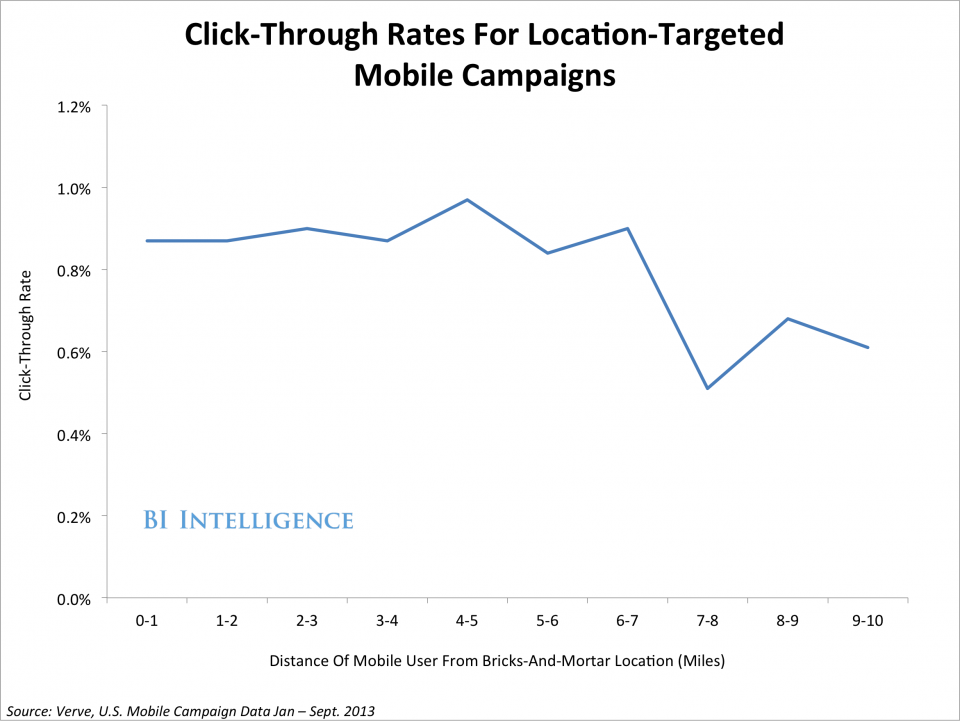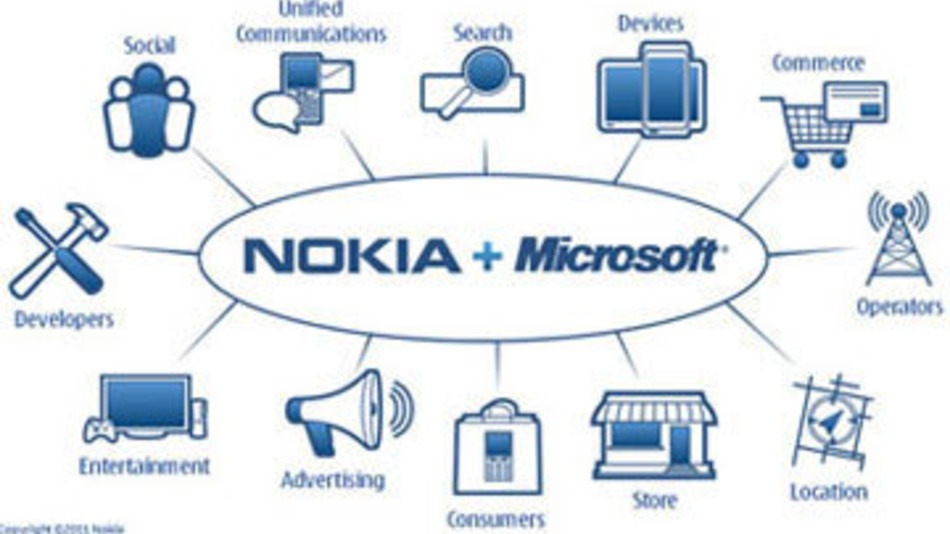
Location Based Ads: What is the magic distance for success ?
Location-based ad campaigns have been THE thing doing the rounds in marketing. There have been numerous reports that have highlighted the power of location based advertising campaigns and their potential. Many organizations and App developers have tried to cash-in on the popularity and potential of Location based ads. Most of these apps and ad campaigns utilize a concept called “geo-fence” – which is a geo geek term for the virtual perimeter in which users are targeted.
What’s the magic distance for the “geo-fence” ?
Any guesses?! According to a report by Verve Mobile, the magic number is “6 Miles”! Honestly, I was thinking somewhere around 2-3 Miles! I guess this number is again going to depend on the country, the city and the state of public transportation. The full report is available for download and reading. I am definitely taking a deeper look at what information is available 🙂
The Click-Through rate is highest at a radius of 5 miles at around 1.2% and falls drastically if the distance is greater than 6 miles. But even more than the drop, I find it interesting that the CTR improves again around 8 Miles! A good topic for research is you are interested in Behavioural Economics 😉
So what’s your personally idea/number for the magic distance?
Source: BusinessInsider





